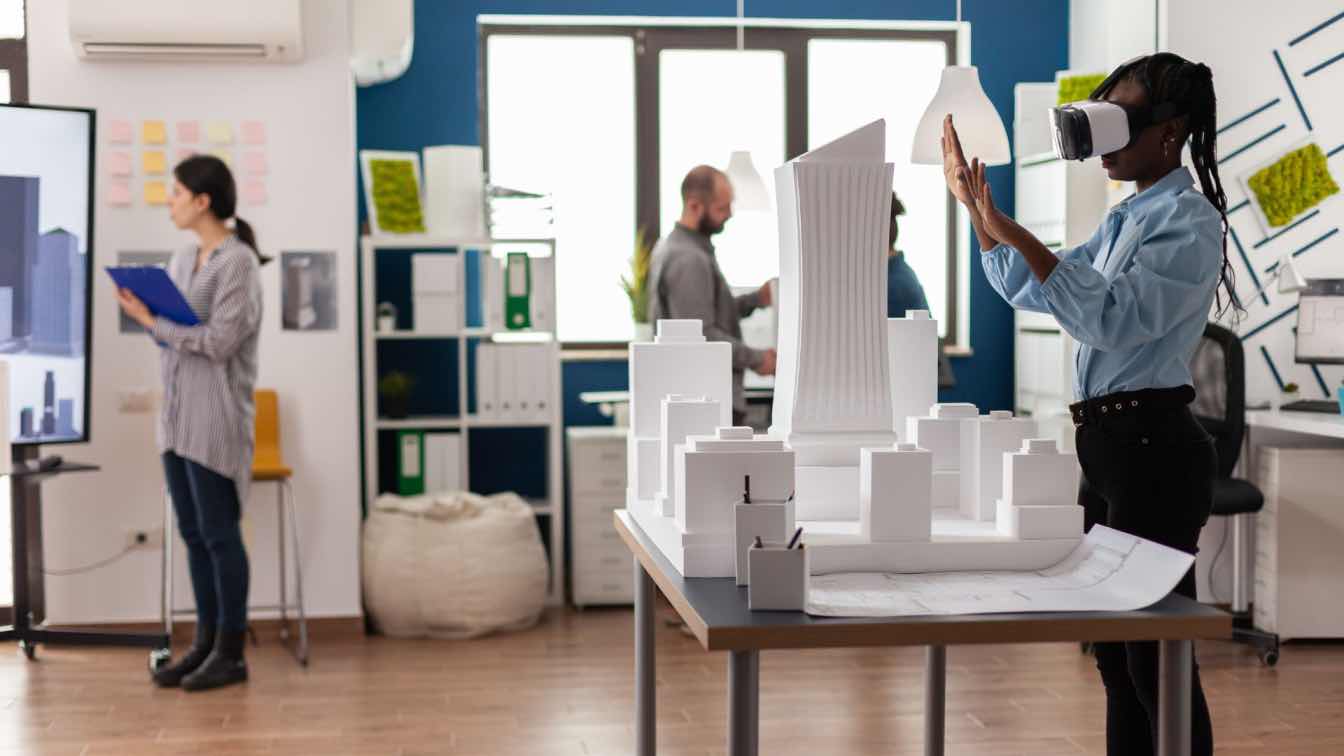Technological advancements are rapidly affecting all aspects of our life, and architecture is no exception. Augmented reality is one of the most significant technologies, which revolutionize the way we approach design and at the same time construction. This technology bridges the actual and virtual worlds, allowing designers and architects to envisage concepts with remarkable precision.
The use of augmented reality in architecture not only alters the way projects are generated, but it also provides new chances for interaction with both clients and building end users. As a result, we're going to examine at how augmented reality affects architecture and how it's shaping the industry's future.
A New Design Paradigm
Augmented reality has made a significant contribution to various areas of architecture, from conceptual design to construction. Thanks to AR, architects have been able to virtually transfer their projects to the real world at the early stages of work. This allowed them to:
- visualize buildings in full scale,
- evaluate them from different angles,
- take into account the impact of the environment,
- adjust the project in real time.
This combination of two realities, virtual and real, not only facilitates processes, but also allows:
- to make more informed decisions for architects,
- increase the accuracy of working with details,
- reduce the risk of errors,
- save resources.
Therefore, AR rendering is becoming an indispensable tool for those architects who want to keep up with the times and successfully do so.
However, not everything always depends solely on technological innovations. The architectural world is no exception. Sometimes it is important to go back to the stages already passed to better understand the direction of movement. In the digital sphere, this may look like a simple reopen tabs action. It seems like a trivial process. But how significant it can be in real life in other areas. When architects face design difficulties or lose direction, returning to already implemented solutions can give a new impetus to creativity. Therefore, restore closed tabs in this context means not only returning to old solutions, but also rethinking them in the face of new opportunities. After all, sometimes to find the best solution, you need to look at the problem from a different angle, and here you will need open tabs on Mac to view old developments from a new perspective.
Augmented and Virtual Reality in Architectural Design
AR and VR complement each other in the field of architecture.
The use of virtual reality in architecture allows you to create a fully virtual environment in which architects and customers can, so to speak, walk through buildings that do not yet exist. This maximizes presentations, as clients can see the final result even before construction begins.
In turn, AR allows architects to integrate virtual elements into the real environment. An example is when augmented reality building allows you to place a model of a building on a real site, considering the existing landscape features along with other objects. Such opportunities:
- help to avoid unforeseen problems during construction,
- allow for immediate adjustments to the project.
Using Augmented Reality at Various Design Stages
Augmented reality in architecture can play different roles.
Project presentation
Thanks to the ability to create photorealistic images, architects can clearly demonstrate what the finished object will look like. This increases the chances of successful project approval.
Initial stage
Architects can create concepts and visualize them in a real environment. This allows them to assess the scale of the project and take into account potential difficulties at the planning stage.
Construction phase
AR is used to monitor the progress of work. Special applications allow you to virtually overlay project documentation on a real object, which makes it easier to control the accuracy of the work. This reduces the likelihood of errors that can lead to construction delays.
Moving from Render to Reality
Render to reality is a complex process, as it requires great precision and thoroughness at each stage. Architects must consider many factors. This is the only way they can turn a virtual model into a physical structure. With the use of augmented reality, they can greatly simplify this process, as it provides a more accurate representation of the project in real life.
However, there are also challenges. During the transition from renderings to real construction, problems can arise due to the difference between the virtual model and physical reality. Certain materials may look different in the real environment. Augmented reality building helps to identify these discrepancies at an early stage and make timely changes to the project.
Conclusion
Augmented reality in architecture gives up new possibilities for design and construction, allowing architects to produce more accurate and visually appealing structures. The application of augmented reality in architecture not only improves design accuracy and productivity, but it also helps to minimize mistakes at all stages of the process and allows for greater customer interaction. As a result, AR is becoming a fundamental aspect of modern design, allowing architects to not only create but also realize their craziest ideas.





